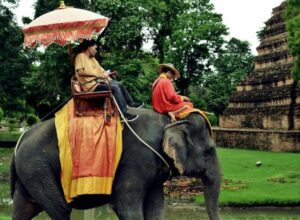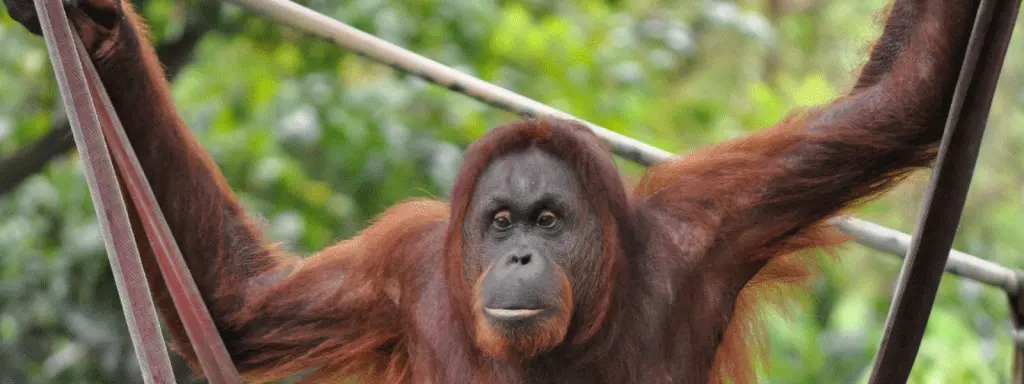Quick Summary Ethical Orangutan Tourism: The post emphasizes the importance of choosing ethical experiences to see critically endangered orangutans in…

The conservation of Asian elephants in Southeast Asia
7.
The conservation of Asian elephants in Southeast Asia
Introduction: The Majestic Giants of Southeast Asia
Asian elephants (Elephant maximus), the second largest land mammals in the world, superseded only by their African relatives, are an iconic species with complicated behaviour and social dynamics. Elephants play a unique role in ecosystems as landscape engineers, meaning they shape the environment substantially. Therefore, they represent nature’s wonders and the urgent need for conservation efforts.
Once Asian elephants ranged from West Asia and Iran, through India to Southeast Asia and China. These days, they are left in only 13 South and Southeast Asian countries, and their range has shrunk by up to 95%. Populations are decreasing alarmingly and today they are listed as Endangered according to the IUCN Red List, as only 45 000 to 50 000 elephants are left in the wild. Three recognised subspecies survive: the Sri Lankan elephant (Elephas maximus maximus), the Indian elephant (Elephas maximus indicus), and the Sumatran elephant (Elephas maximus sumatranus).
Despite this decline, elephants maintain a leading role in several cultures and religions. In Buddhism, they have a major part in the teachings and they indicate both mental strength and wisdom. In Hinduism, they represent Ganesh, the God of Beginnings, whose elephant tusk symbolises intellectual strength and adaptability.
 Historically, these elephants have served humans in multiple ways such as waging war, transporting both people and goods, and harvesting forests, thereby playing a valuable role in the economies of numerous countries. Elephants are still used in logging in some places, such as Myanmar. In Thailand, it was banned at the end of the 1980s, leaving many elephants and their mahouts without work. This had severe consequences for the animals’ welfare.
Historically, these elephants have served humans in multiple ways such as waging war, transporting both people and goods, and harvesting forests, thereby playing a valuable role in the economies of numerous countries. Elephants are still used in logging in some places, such as Myanmar. In Thailand, it was banned at the end of the 1980s, leaving many elephants and their mahouts without work. This had severe consequences for the animals’ welfare.
To prepare a wild elephant for the abovementioned works, they first go through a traditional practice called phajaan. For centuries, this cruel process has been used to domesticate young wild elephants, leaving them traumatised from an early age. First, they are isolated from their mothers, then beaten with sharp metal tools and starved until, ultimately, they are mentally broken and have lost their spirits.
Threats to Asian Elephants in Southeast Asia
Today, Asian elephants face various anthropogenic threats. Habitat loss and fragmentation are happening because of the increasing human population and expanding economies. As farming, urbanization, and infrastructure spread, elephants are squeezed into smaller patches that block their migration routes and natural behaviours.
In addition to habitat loss, human-elephant conflicts are common in the territory where elephants still roam. Due to habitat loss, elephants will often wander into farmland, causing damage to crops and properties, and even human casualties. It is estimated that around 400 to 500 people lose their lives every year as a result of such encounters. Almost half the Asian elephant population lives in habitats heavily impacted by humans, making these conflicts nearly inevitable.
Poaching and illegal trade pose another major threat. Many link these threats to ivory. Still, elephants are also being killed for alternative reasons, such as for their meat and skin, which is an increasing concern all around Southeast Asia. While only male elephants have tusks, females are under pressure now too. This influences the fragile elephant population and its genetic variation, which can lead to interbreeding problems.
Finally, climate change will directly and indirectly impact these highly temperature-sensitive giants. Rising temperatures and changing water availability will have a direct impact, while indirect impacts are seen through habitat and nutrition changes.

Conservation Efforts: Protecting the Gentle Giants
Despite all these threats, the fight is not over yet. Many conservation strategies are focused on education, sustainable practices, and community engagement. We need scientists, policymakers, and local communities to work together, sharing their knowledge and skills. The Kathmandu Declaration for Asian Elephant Conservation (2022) is one of many examples of this commitment. All 13 range countries participated, presenting formal strategies and agreements to guarantee Asian elephants and their habitats are being secured. Next, these agreements must be set up with actionable solutions on the field.
Protecting large conservation areas is crucial to elephants’ survival. Deforestation and habitat loss are major issues since elephants need wide territories to roam and migrate. To tackle this, implementing green infrastructures is vital. An example of this kind of action is wildlife corridors. They are set up through palm oil plantations and highways to integrate nature reserves and advance reforestation efforts.
Many efforts target human-elephant conflict areas. Some of these contributions seek to keep elephants further away with more traditional methods. Fences, acoustic, and chemical deterrents are commonly used in Thailand, while in Pahang, Malaysia food banks near forest borders have slowed the movement of elephants towards villages. In Indonesia, residents of Alue Buloh volunteer elephant patrollers to protect farmers’ livelihoods and communities. Additionally, the goals for local communities are to change behaviour, educate, create alternative livelihoods, and find better solutions to coexist with elephants.
A serious concern of elephant poaching and illegal trade for ivory, skin, and meat remains in Southeast Asia. Solving these issues requires joint enforcement collaboration and networking. Furthermore, creating more public awareness and changing behaviours will affect both the supply and demand, which is essential for tackling wildlife crime.
Besides, rehabilitation programmes where elephants are rescued from captivity, intend to return them to a more natural and self-reliant environment. Some captive elephants, such as those in zoos, participate in breeding programmes. These programmes plan to support conservation efforts and maintain genetic diversity. However, instead of replacing habitat maintenance to sustain populations in their natural environments, they should complement larger efforts to secure elephants’ long-term survival.
The Road Ahead: Challenges and Opportunities
The Asian elephant is running out of time if measures are not taken immediately. We must find a way to balance the challenge of a growing economy while protecting elephant populations and their habitats. Innovative technologies are developed, such as a lifelike robotic elephant, which was introduced in the rituals in India to stop the cruel treatment of elephants. Satellite tracking and AI are also utilised to monitor and protect populations in the wild. Inspiring success stories from Southeast Asia are proof of the strength of collective determination and motivation.
Conservation of Asian elephants begins with raising public awareness and education, which are important elements. All of us can be part of the change by making environmentally friendly choices in our everyday lives, advocating policy changes, and supporting responsible organisations and ethical tourism. This way, future generations will have the opportunity to know and witness these intriguing mammals thriving in their natural habitat.
Moving forward, let us keep in mind Senegalese forest engineer Baba Dioum’s famous words from the IUCN meeting 56 years ago that still resonate strongly,
“In the end, we will conserve only what we love, we will love only what we understand, and we will understand only what we are taught”.



